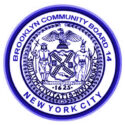Bedford Beverly Redevelopment Site #C224384 - 2359 and 2360 Bedford Avenue Brownfield
The Remedial Action Work Plan is under review and DEC will issue a Decision Document at the end of the review process.
The site is being prepared for remedial work. While the Sears Building will remain, all other site buildings were or are being demolished. Support of excavation is being installed to facilitate excavation. Construction and demolition materials and soil dug up while installing support of excavation are being exported off site. All of this work is being conducted under a Change of Use acknowledgement. The site owner’s environmental consultant is on-site to monitor all work and is running a Community Air Monitoring Program also called CAMP.
For detailed and accurate information visit NYS DEC’s Environmental Site Remediation Database Search and search for this site using Site Code: C224384
View/download site-related documents at NYS DEC’s website www.dec.ny.gov/data/DecDocs/C224384/
Questions, comments?
Meghan Medwid, Project Manager
NYSDEC
625 Broadway
Albany, NY 12233
(518) 402-8610
meghan.medwid@dec.ny.gov
Description
The site, located at 2359 and 2360 Bedford Avenue in Brooklyn’s Little Caribbean neighborhood, spans 4.31 acres across two lots—Block 2359, Lot 14, and Block 2360, Lot 53. It is bordered by multi-family residential buildings to the north, east, and south, and commercial buildings to the west. Both lots are currently vacant, with Lot 14 featuring a three-story commercial building and a parking lot, and Lot 53 having a one-story commercial building and a parking lot. The site is zoned for commercial and residential use (C4-2/R6A) and is currently under construction for mixed-use development.
Historically, the site has been used for commercial and industrial purposes since the 1880s, including plastic molding, auto repair, gasoline filling, and retail. The site geology consists of historic fill material extending 6 to 15 feet below ground, with sand, clay, and various debris. Groundwater was observed at depths of 22 to 28 feet and flows south-southwest.
Site Environmental Assessment Summary
This information is meant to be illustrative only. For detailed and accurate information visit NYS DEC’s Environmental Site Remediation Database Search and search for this site using Site Code: C224384 or contact the DEC’s Project Manager.
- Contaminants: The primary concerns are semi-volatile organic compounds (SVOCs) and metals in soil, volatile organic compounds (VOCs) in groundwater, and VOCs in soil vapor.
- Soil: SVOCs like benzo(a)pyrene and metals such as lead and mercury were detected above regulatory limits, with contamination reaching up to 14 feet deep. Pesticides and polychlorinated biphenyls (PCBs) were also present but at lower levels.
- Groundwater: VOCs such as chloroform and 1,2,4-trimethylbenzene exceeded Ambient Water Quality Standards and Guidance Values (AWQSGVs). Perfluorooctanoic acid (PFOA) and perfluorooctane sulfonic acid (PFOS) were found above acceptable limits, though no historical use of these chemicals was identified.
- Soil Vapor: VOCs like tetrachloroethene (PCE) and trichloroethene (TCE) were detected in soil vapor, but no off-site impacts were found.
- No Off-Site Impacts: Data suggests no off-site contamination in soil, groundwater, or vapor related to the site.
Contaminants of Concern:
- 1,2,4-Trimethylbenzene (1,2,4-TMB)
- Benzo(a)anthracene
- Benzo(a)pyrene
- Benzo(b)fluoranthene
- Benzo(k)fluoranthene
- Chrysene
- Dibenz[a,h]anthracene
- Indeno(1,2,3-cd)pyrene
- Lead
- Mercury
- Tetrachloroethene (PCE)
- Trichloroethene (TCE)
What is the Brownfield Cleanup Program?
New York’s Brownfield Cleanup Program (BCP) is designed is to encourage private-sector cleanups of brownfields and to promote their redevelopment as a means to revitalize economically blighted communities. The BCP is an alternative to “greenfield” (land not previously developed or contaminated) development and is intended to remove some of the barriers to, and provide tax incentives for, the redevelopment of brownfields. Since its inception (2003), the BCP has catalyzed the cleanup of more than 500 contaminated sites statewide and incentivized redevelopment. There are more than 550 active sites in the BCP.
Additional information on the State’s Brownfield program is available at DEC’s website: http://www.dec.ny.gov/chemical/8450.html

